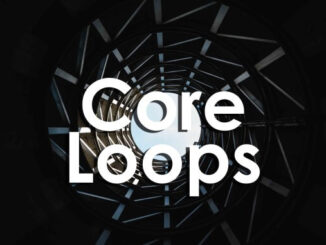
Change Through Experience
At the end of a training serial, tank commanders will immediately conduct a ‘hot-debrief’, discussing what went well, what went badly and how they can improve next time.
After several serials the commanders congregate in a trailer and watch video analysis of their performance. Data is gathered throughout the process, everything from exact grid locations to radio chatter snippets.
Throughout the process, there is always a frank, honest and open discussion between the team which doesn’t seek to apportion blame, but simply wishes to be better next time.
These discussions are guided by an external facilitator, but the direction of the discussion is dictated from within.
Within this dynamic the data is the essential building block of accountability, it takes the debate beyond what happened (we can see that, live and in real time) and moves into why it happened – because when you understand the why you can make different decisions in similar situations.

So how can this translate into the Corporate Environment?
As an Army Officer, turned Escape Room Designer I’ve always been fascinated by how the participants interact within our experiences – why certain participants speak continuously or why some of the best puzzle solvers say nothing at all.
We knew that what we were observing was immensely valuable; it was gamified, visual, and showcased teamwork at its very best (and worst) but we needed to understand what we were seeing. By working with Michelle Mills-Porter, a leading behavioural analysist, to understand what was going on within the room we learned that individuals were showcasing their core behaviours.
So how to design an experience which would provide us the best data
The crafting of the experience needed to reflect the problems teams encounter during their working day, allowing the gamified data to prompt team action towards actually achieving tangible change. This was done through the design and implementation of ‘loops’ – specific puzzles and challenges which showcase individual and team dynamics.
We use a wide range of loops, for example:
Time: Of course, the experience is timed, but we also introduce timed challenges within the overall experience, forcing teams to hit tough deadlines – only achievable by managing their priorities.
Asymmetric Communication: ‘I know something you don’t know’ – by sending some individuals out on tasks which are outside of the room, participants rely on their communication via radio to achieve team goals.
Collaboration and Prioritisation: Elements of the puzzle cannot be solved without participants working together, but to achieve all group aims, teams will need to understand where their and (more importantly) where their colleagues’ skills lie.
Of course, there are many more, which gives our facilitators the opportunity to select those most relevant to the team.
And so to feedback
The experience is filmed throughout, we have an analyst on site who observes in real time and can provide the feedback that day or, if client time allows, we can come back the following day armed with more information.
The headings are delivered by us; based on the data we have observed, but the discussions are led by the team – it is critical they find the solutions to where they’ve been going wrong together, whilst also highlighting group successes.
We’ve seen transformational moments during this process; incidents of participants being spoken over, despite having the correct solution and then not proffering this again. It is not a gigantic leap to suggest this may be happening in the work environment.
How to confirm the change
Though this process is transformational, it is critical that actions are agreed on. We base our workshop on how different personality types prefer to be communicated with – from youth we’re told to ‘treat others as you would wish to be treated’ why not go on step further and treat them as they wish to be treated.
To showcase the power of this change we mix behavioural types and use immersive VR exercises to practise these skills, so that participants leave having understood the power of their words and behaviours.
- Feedback – Creation and Delivery through Live Experience - 15th July 2021





Be the first to comment